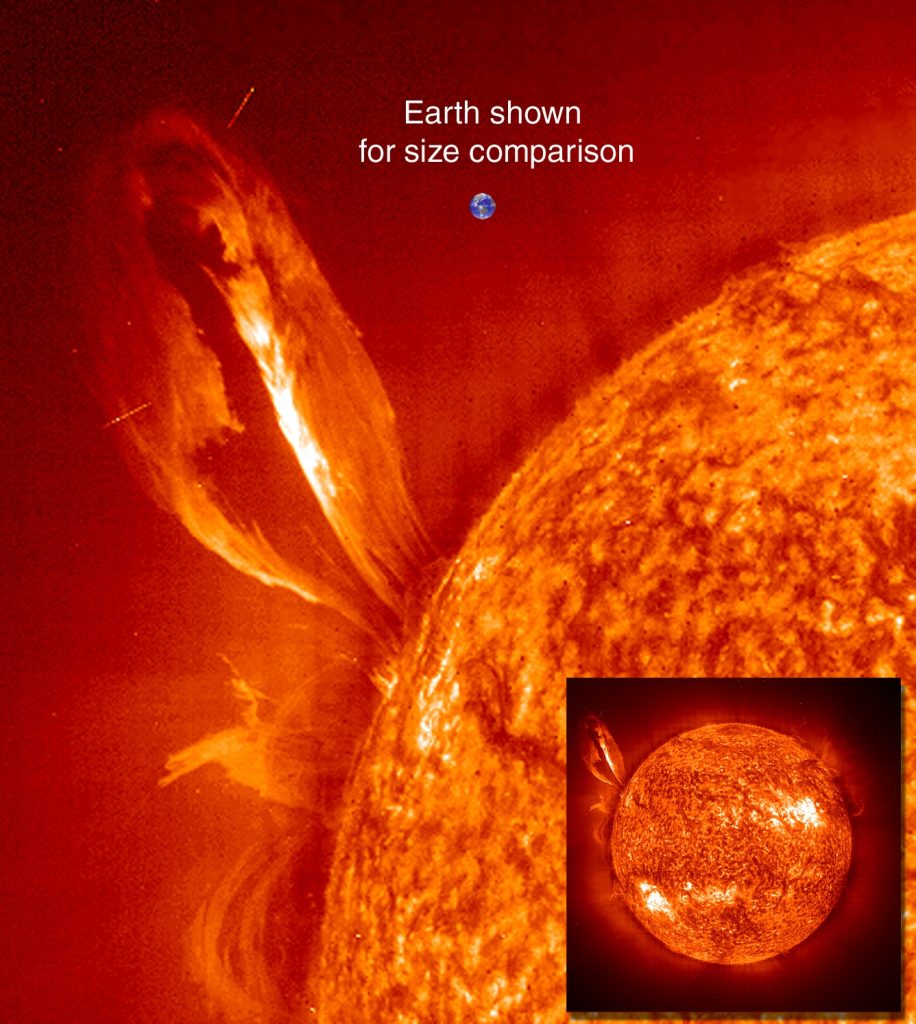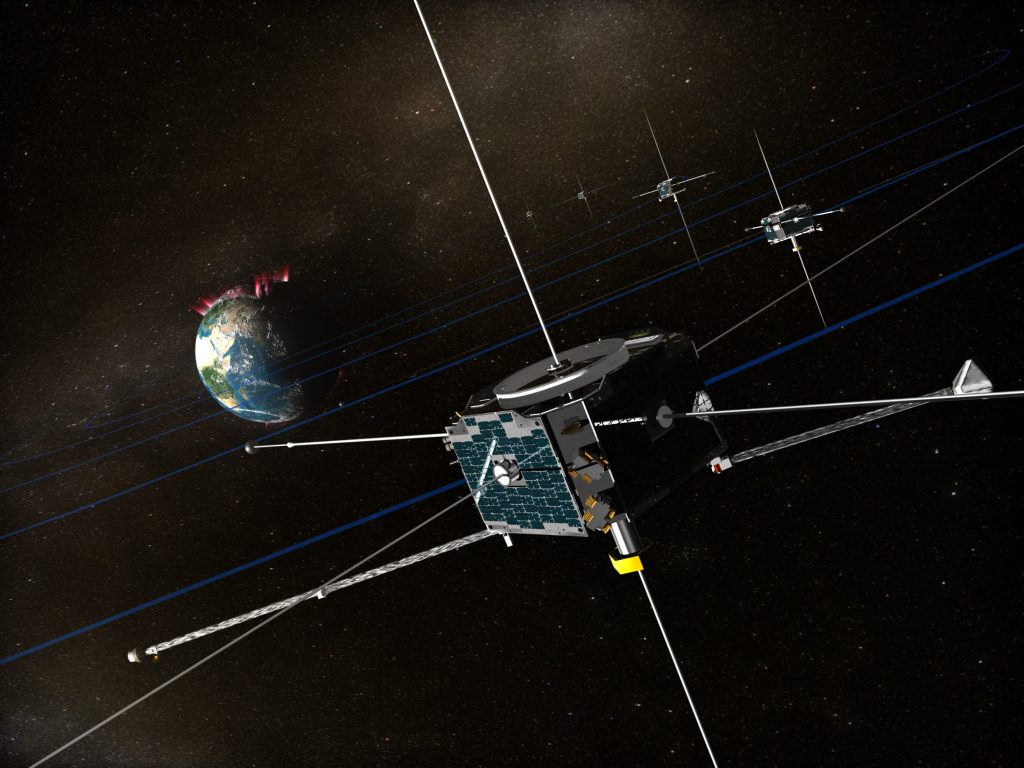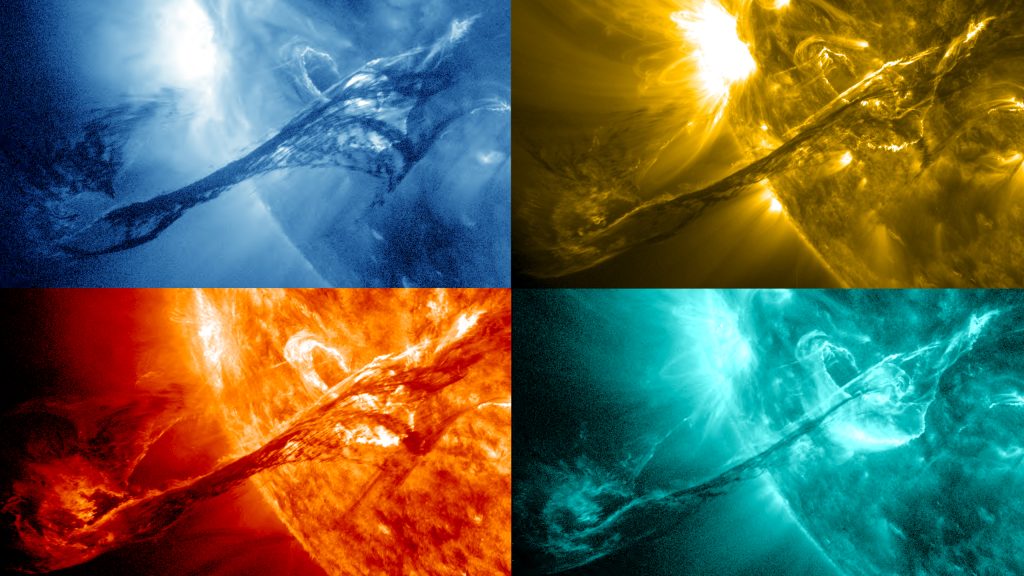Elucidation of Space Plasma Explosion Phenomena
※The content is current at the time of writing.
Flare Explosion Phenomena Clarified by Spacecraft Observations and Computer Simulations
Research Overview

Various explosions occur in the universe. The one that immediately comes to mind is the supernova explosion. The star itself explodes, releasing unimaginable energy. However, such explosions do not occur so easily in the vicinity of our solar system (although it would be a disaster if they did…). A more familiar explosion phenomenon is the solar (stellar) flare. It is difficult to see in visible light, but X-rays and ultraviolet rays can cause a sudden increase in light intensity (explosion). Now is the time of year when solar activity is very active, with more than 100 sunspots appearing on the Moon, and large-scale flares have been observed above these sunspots. Even a small sunspot is the size of the Earth. You can imagine how large an explosion a solar flare is when it occurs at a location where sunspots larger than the size of the Earth are concentrated (Figure 1).
And closer to home, auroral explosions can be observed in the polar regions of the Earth’s magnetosphere. Auroral explosions are very beautiful phenomena from the ground, but they are actually explosively accelerated particles pouring into the polar atmosphere from space. The acceleration of these particles is related to the explosive release of energy from the magnetic field in the Earth’s magnetosphere. And in the solar flare I mentioned earlier, the energy of that explosion is also the energy of the magnetic field. These explosive phenomena that use magnetic fields as their energy source are the subject of my research.
Research Features
In the Earth’s (planet’s) magnetosphere, magnetic energy explosions occur mainly in two places: where the Earth’s magnetic field and the solar (solar wind) magnetic field collide (day side) and where the Earth’s magnetic field is stretched out and collides with each other (night side). One of the great things about studying space plasma is that we can send probes to the actual location where the phenomenon is occurring. We have sent many spacecraft to the location of the explosion to make direct observations (Fig. 2). But imagine. Even if we send several probes, they are only a few points in the large magnetospheric space. Computer simulations fill in the space between these probes. Using the observation data obtained by the spacecraft and the simulation data reproduced in three-dimensional space, we can investigate explosive phenomena occurring in the magnetosphere.
On the other hand, you cannot send a probe to the sun. Even if you did, it would be destroyed immediately. However, we can observe the whole picture of the phenomena occurring on the sun. We can see the whole picture of the explosion, which cannot be observed in the magnetosphere of a planet. Furthermore, simultaneous observation at many wavelengths allows us to understand the time evolution of flares in detail (Fig. 3). However, what can be observed is a two-dimensional projection of the phenomenon. After all, computer simulations reproduced in three-dimensional space will be of great significance in the study of solar flares (Fig. 4). Thus, we are studying these seemingly separate explosion phenomena using in-situ observations by spacecraft ,multi-wavelength remote observations, and computer simulations.
Research Attraction
Cosmic plasma explosions are phenomena that also occur outside our solar sphere and galaxy. Although the spatial and energy scales of these phenomena cover a wide range, the underlying physical phenomena are believed to be the same. Using the inner solar envelope as a large laboratory, we can study explosive phenomena occurring in various locations throughout the universe. We can conduct cutting-edge research using formation observations by multiple spacecraft, observations with multi-wavelength high-sensitivity telescopes, and by making full use of supercomputers that have dramatically improved the speed of calculation. No two explosive phenomena are exactly the same. The new structures and unexpected phenomena that emerge from them spur us on.
Future Outlook
Solar flares do more than just explode. Large-scale flares spew high-energy radiation that disrupts our space activities. The plasma ejected from the sun attacks the earth’s magnetic field with a powerful magnetic field. This causes a global magnetic storm that destroys satellites, and on the ground, massive currents hit power plants, causing massive power outages. However, just as typhoons are forecasted, attempts are being made to forecast these phenomena in space to minimize their impact (known as space weather). We are aiming not only to understand the physics of explosion phenomena, but also to predict flares in order to improve forecast accuracy.
Message to those who are interested in this research
Being able to use many research tools means that one must be able to master them. This is not something that can be acquired overnight. They can only be mastered by building on the comprehensive knowledge that you have acquired since you were a child. Remember that what you are studying now is the foundation for the next step, and understand that creative ideas can only be born when you have this knowledge. The space field in particular is a field that requires a broad base of knowledge. You never know what kind of knowledge will open the door to a new world. I encourage you to challenge yourself in a world where new questions will emerge on top of the existing ones.





